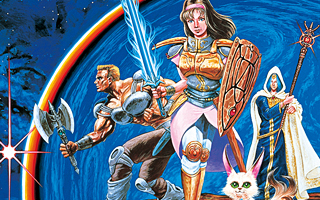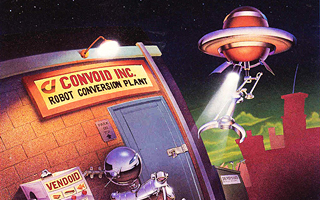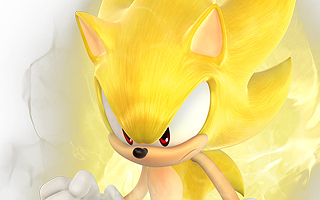Face the Music
Top 10 Best Video Game Music Levels of All Time!
The art of arranging sounds into music is common to every known human culture in the world. Although music is generally meant to be heard, the entries on this countdown prove that there are other ways that music can affect you. These gaming worlds are typically built out of musical instruments or musical notation, and it’s often possible to “play” the music-themed set pieces. The levels are often populated by living representations of instruments, however, so they may force you to face the music in a literal sense.
10
World 1
Parasol Stars

Parasol Stars is the oldest game on this countdown, and it’s almost certainly the most simplistic. There’s nothing unique about the layout or aesthetics of its first world, and the reason it’s being mentioned here is entirely due to the enemies that inhabit it. In order to claim victory, you’ll have to subdue a litany of anthropomorphic instruments. Wooden castanets meander across the ground, trumpets slither around like snakes, and accordions hop around like bunny rabbits. There are also idiophone triangles that chaotically ricochet off walls and large pianos that… well, the pianos pretty much just stay where they are. The final challenge in the level comes in the form of a one-man band that’s comprised of various instruments. The boss has a bass drum for a body, trumpets for feet, and clashing symbols in place of a hat. For reasons I don’t fully understand, he also plays harmonica as he marches back and forth across the screen. Literally every enemy you fight in the game’s first world is a musical instrument of some type. It’s just too bad that the musical theme wasn’t engrained into the stages themselves.
9
Music World
Zool

A side-scrolling platformer with colorful visuals and a surreal setting, Zool was poised as Amiga’s answer to Sonic the Hedgehog. The game was notable for its imaginative level settings, and Music World is a great example. The level is set against the backdrop of the world’s largest music store, and the stage is literally comprised of stereo equipment and speaker wires. Zool is encouraged to collect compact discs and vinyl records as he works his way through the stage, but he faces opposition in the form of walking timpani drums, bouncing violins, and floating cymbals. There’s also an electric guitar that’s surrounded by hostile guitar picks! (In the Genesis version, the guitar boss is equipped with flamethrowers for some reason!) Fortunately, some of the music equipment is actually helpful. Zool will have the opportunity to bounce off of drum kits, run around on record turntables, and saunter across giant piano keyboards. These concepts are not especially unusual on a countdown like this one, but the folks at Gremlin Graphics deserve some points for their creativity. By playing certain melodies on the aforementioned keyboards, Zool can potentially gain extra lives or open up secret rooms. He can even access a hidden shoot ’em up stage by playing the theme from Close Encounters of the Third Kind!
8
Squidward’s Dream
SpongeBob SquarePants: Battle for Bikini Bottom

Licensed games aren’t eligible for most of the countdowns on this list, but Squidward’s Dream from Battle for Bikini Bottom warrants a mention since it was created specifically for a video game. The object of the level is for SpongeBob to work his way across a sprawling reel of sheet music by jumping from one floating music note to the next. Thankfully, SpongeBob can also use saxophones, drums, and tambourines as springboards along the way. The task isn’t as easy as it sounds, however. The notes are static at first, but they begin to move after you reach the first checkpoint. Worse yet, the notes sound horrible when you jump on them. The background music is downright jarring, and this is by design. The discordant sounds are meant to reflect Squidward’s musical talents (or lack thereof), so this is a rare example where it’s thematically appropriate for a game to have bad music. You’ll likely be tempted to use the mute button when you visit the stage, but I think we can all take solace in the fact that Squidward’s Dream looks incredible. A floating Squidward head sits at the center of the stage, and the sheet music that you’re following is being generated from his clarinet. It’s a surprisingly inventive dreamscape despite the intentionally dreadful music.
7
Tempest Peak Manor Piano
Vexx

Vexx is a 3D platformer from 2003 that was met with middling reviews. With that in mind, it should be noted that this countdown isn’t necessarily concerned with overall game quality. Instead, we’re merely looking at how well specific levels fit with the music theme. In that sense, Vexx ticks all the right boxes. After entering Tempest Peak Manor, players come across a massive, double-keyboard grand piano. The keys actually play the appropriate notes when you walk on them, and you can potentially play any melody you want! The real fun happens when you jump inside the piano and stumble upon a whole new world hovering above a swirling vertex. In this area, you’ll hop around on massive drums, take a stroll through a giant saxophone, and carefully venture across spinning cymbals. There are also giant violins (complete with moving bows) and plenty of floating platforms comprised of quarter notes and music staves. Even though you’re inside a supersized piano during this section, you’ll come across several smaller pianos. I don’t quite understand the logistics, but that’s part of the charm.
6
Music Plant
Sonic Advance 2

Compared to its immediate predecessor, the levels in Sonic Advance 2 were longer, more complex, and awash with creativity. Music Plant is a perfect example of this inventiveness. Although the zone plays like a typical Sonic stage, it looks like a musician’s paradise. Music notation is used instead of bumpers, springboards are replaced with cymbals, and enormous brass horns operate like intricate chutes throughout the level. There are also colorful xylophone bars that bounce you into the sky, piano keys that propel you through narrow passages, and transverse flutes that produce vertical wind streams that can reduce the effect of gravity. On a more superficial level, Music Plant is saturated with musical overtones. Large instruments can be seen on the horizon, for example, and lively music notes will occasionally emerge when Sonic and his friends interact with certain objects or set pieces. The music theme even carries over onto the map screen, and the Zone’s icon resembles a keytar. Music Plant might have ranked higher on this list if the boss wasn’t so mundane. I would have loved to see Eggman embrace his inner musician.
5
Stage 6
Sparkster

One of the things I miss most abut the 16-bit era is how companies would often release completely different versions of their games for the Super Nintendo and Sega Genesis. This is certainly how Konami approached Sparkster in 1994. Since each game was built from the ground up, they had entirely different levels. One of the most creative stages in the SNES version sees our chivalrous hero venturing through a music-themed level for some reason. Large snare drums act as veritable trampolines, oversized horns allow Sparkster to traverse through networks of brass tubing, and massive saxophones are constantly erupting with exciting bursts of confetti and baddies. There’s also an enormous piano keyboard on the ground that actually plays when you walk on it! I was almost expecting Tom Hanks and Robert Loggia to make an appearance. Staying true to the music theme, the stage boss plays an epic solo on a pipe organ before the battle ensues. Although the level itself doesn’t really jive with the game’s overall narrative structure, I appreciate how unexpected it was.
4
Melody Town
Kirby’s Epic Yarn

Melody Town isn’t the most complex level on this list, but it’s certainly one of the most interactive. The stage is populated by gigantic musical instruments, and it’s possible to play most of them! Large piano keyboards will play notes when you move across them, for instance, and some of them will even play the game’s main theme. There are also various types of drums thrown into the mix. Snares and kettledrums work like standard platforms while the cymbals are more akin to trampolines. Rest assured, all of the drums will make the appropriate percussion sounds when you jump on them. You’ll also be able to strum oversized harps by gently swinging across their strings. When Kirby’s not busy making music, he’s likely becoming music. Our favorite pink puffball will have the opportunity to launch himself out of a giant trumpet and onto a reel of sheet music. This process will effectively transform him into a music note! In other instances, Kirby will navigate through the inner workings of enormous French horns before exiting onto other pieces of music. While he’s in his Note form, Kirby can potentially collect gems by lining himself up with other music notes. The instruments in Melody Town aren’t just there for decoration, and that’s what makes the stage so memorable.
3
Sonata
Ristar

Sonata is the fourth world that Ristar visits in his debut game. The music theme is apparent from the moment you enter the stage, and the planet’s infrastructure relies on musical instruments rather than traditional building materials. Piano keys are used as floors, clarinets take the place of walls, and trumpets act as improvised ladder rungs. Ristar will also have to use large snare drums as trampolines, but that’s par for the course on this countdown. The stage feels significantly different from the ones that preceded it, and Ristar spends an inordinate amount of time delivering metronomes to aspiring musicians. (This effectively lets him compose the background music measure by measure.) Much in the same way that actual sonatas are comprised of multiple movements, Planet Sonata is divided into two distinct acts. Naturally, this means that there are two separate boss battles! Fittingly, both of the bosses stay true to the overarching music theme. The first battle involves a conductor who uses a baton to instruct his larger allies to attack poor Ristar. In the next fight, Ristar finds himself on stage while a gifted songbird is in the midst of a vocal performance. The goal here is to prevent a larger (and less talented) bird from stealing the spotlight and stinking up the joint with his tone-deaf melodies.
2
Band Land
Rayman

If you were to do a search for Rayman music levels on the Internet, you’d be inundated with endless links about the rhythm stages from Rayman Legends. We’re going to focus on Rayman‘s “original” music levels from 1995, however, as they’re more appropriate for this countdown. During Rayman’s first adventure, he had the opportunity to visit the wonderful world of Band Land. In these stages, bongo drums are used as platforms, upright recorders act as walls, and wavy sheet music lines behave like downhill slopes. Rayman also has to contend with walking snares and trumpets that can propel him forward with powerful blasts of air. There’s even a music-themed boss in the form of a sentient saxophone that bombards Rayman with hostile music notes! Band Land is absolutely breathtaking, and the beautiful hand-painted backgrounds underline the music theme. Majestic harps can be seen in distance, monolithic banjos extend to the heavens, and giant piano keyboards contour rolling hills. The levels are as fun to look at as they are to play!
1
Music Park
Mario Kart Series

Super Mario Kart launched an entirely new sub-genre in 1992, and each entry in the series has brought something new to the table. New characters and weapons are constantly being introduced, and the courses are overflowing with creativity. Music Park (also known as Melody Motorway) was one of the most innovative tracks from Mario Kart 7, and nearly every aspect of the course references music in some fashion. The tracks are lined with pumping speakers, massive trumpets can be seen blasting away in the distance, and horizontal music staves act as provisional Jersey barriers along the sides of the road. There are also giant tambourines that function like springboards and oversized music notes that bounce side to side in time with a metronome beat. The Piranha Plants feel the rhythm too, and they appear to bop their heads to the music. Several sections of the track are comprised of oversized instruments, and players will have an opportunity to drift over enormous piano keys. These instruments actually play sound when you drive on them, and the arpeggio scales you hear are audible indicators of how fast you’re going. If you’re looking for even more excitement, you can potentially perform jump boosts off of the raised black keys! Music Park returned in Mario Kart 8 as a retro track, but very few changes were made outside of the cosmetic upgrades.





Do you agree with this list? Let us know what you think by leaving a comment below. Your opinion matters!